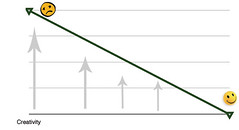
Researchers from the University of Minnesota’s Lillehei Heart Institute have effectively treated muscular dystrophy in mice using human stem cells derived from a new process that — for the first time — makes the production of human muscle cells from stem cells efficient and effective.
The research, published May 4 in Cell Stem Cell, outlines the strategy for the development of a rapidly dividing population of skeletal myogenic progenitor cells (muscle-forming cells) derived from induced pluripotent (iPS) cells. iPS cells have all of the potential of embryonic stem (ES) cells, but are derived by reprogramming skin cells. They can be patient-specific, which renders them unlikely to be rejected, and do not involve the destruction of embryos.
This is the first time that human stem cells have been shown to be effective in the treatment of muscular dystrophy.
According to U of M researchers — who were also the first to use ES cells from mice to treat muscular dystrophy — there has been a significant lag in translating studies using mouse stem cells into therapeutically relevant studies involving human stem cells. This lag has dramatically limited the development of cell therapies or clinical trials for human patients.
The latest research from the U of M provides the proof-of-principle for treating muscular dystrophy with human iPS cells, setting the stage for future human clinical trials.
“One of the biggest barriers to the development of cell-based therapies for neuromuscular disorders like muscular dystrophy has been obtaining sufficient muscle progenitor cells to produce a therapeutically effective response,” said principal investigator Rita Perlingeiro, Ph.D., associate professor of medicine in the Medical School’s Division of Cardiology. “Up until now, deriving engraftable skeletal muscle stem cells from human pluripotent stem cells hasn’t been possible. Our results demonstrate that it is indeed possible and sets the stage for the development of a clinically meaningful treatment approach.”
Upon transplantation into mice suffering from muscular dystrophy, human skeletal myogenic progenitor cells provided both extensive and long-term muscle regeneration which resulted in improved muscle function.
via Science Dailyᔥ
The Latest Streaming News: Muscular Dystrophy Treatment updated minute-by-minute







